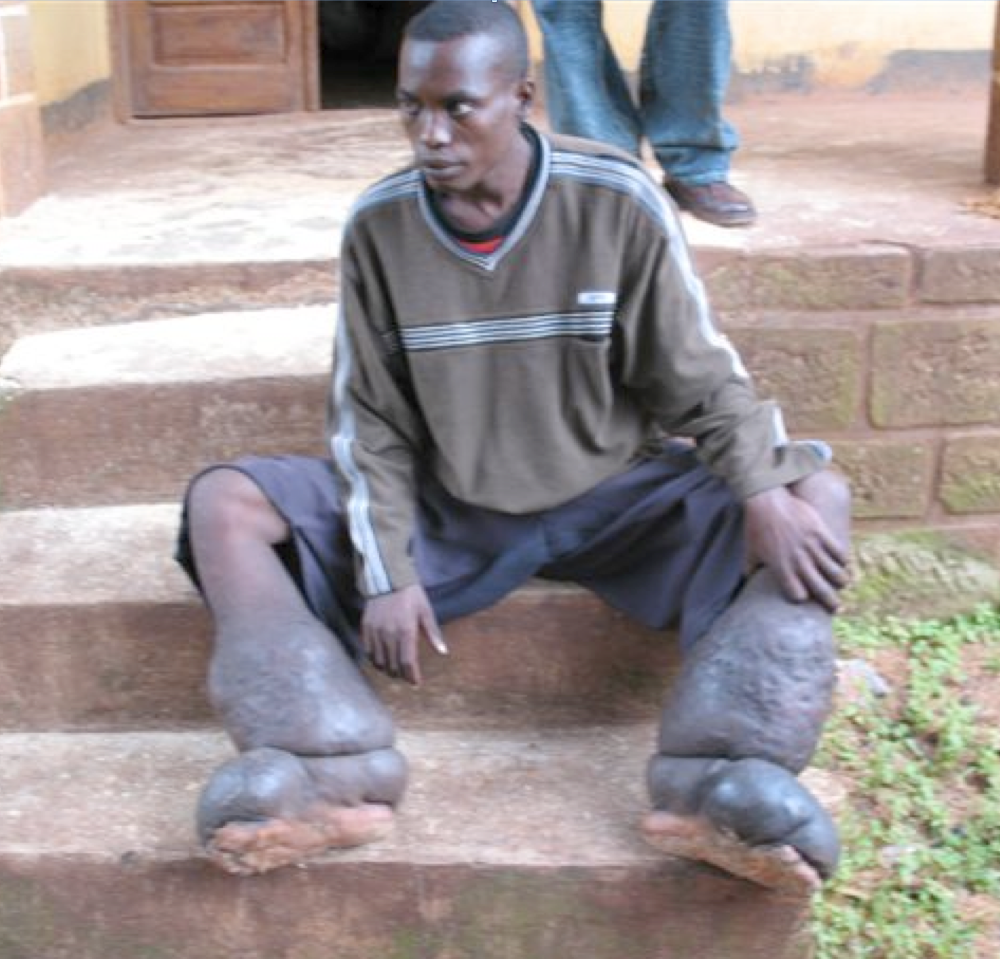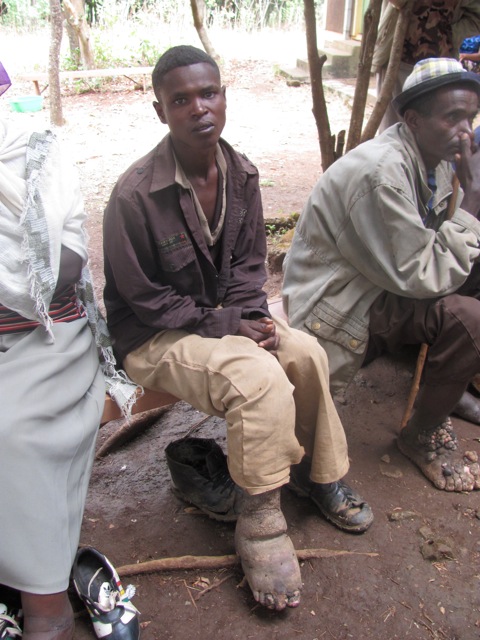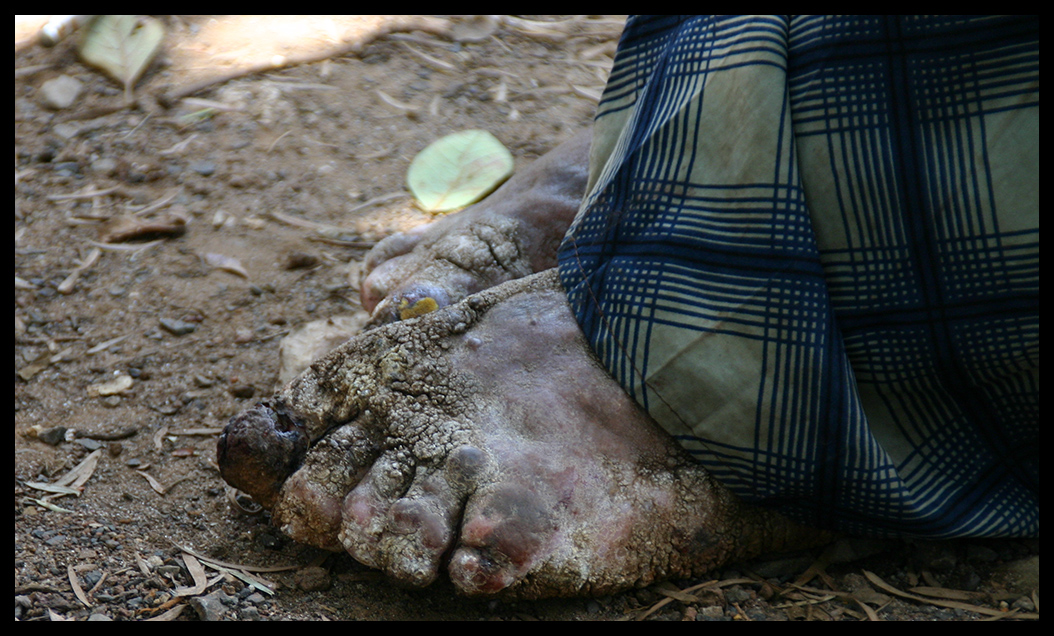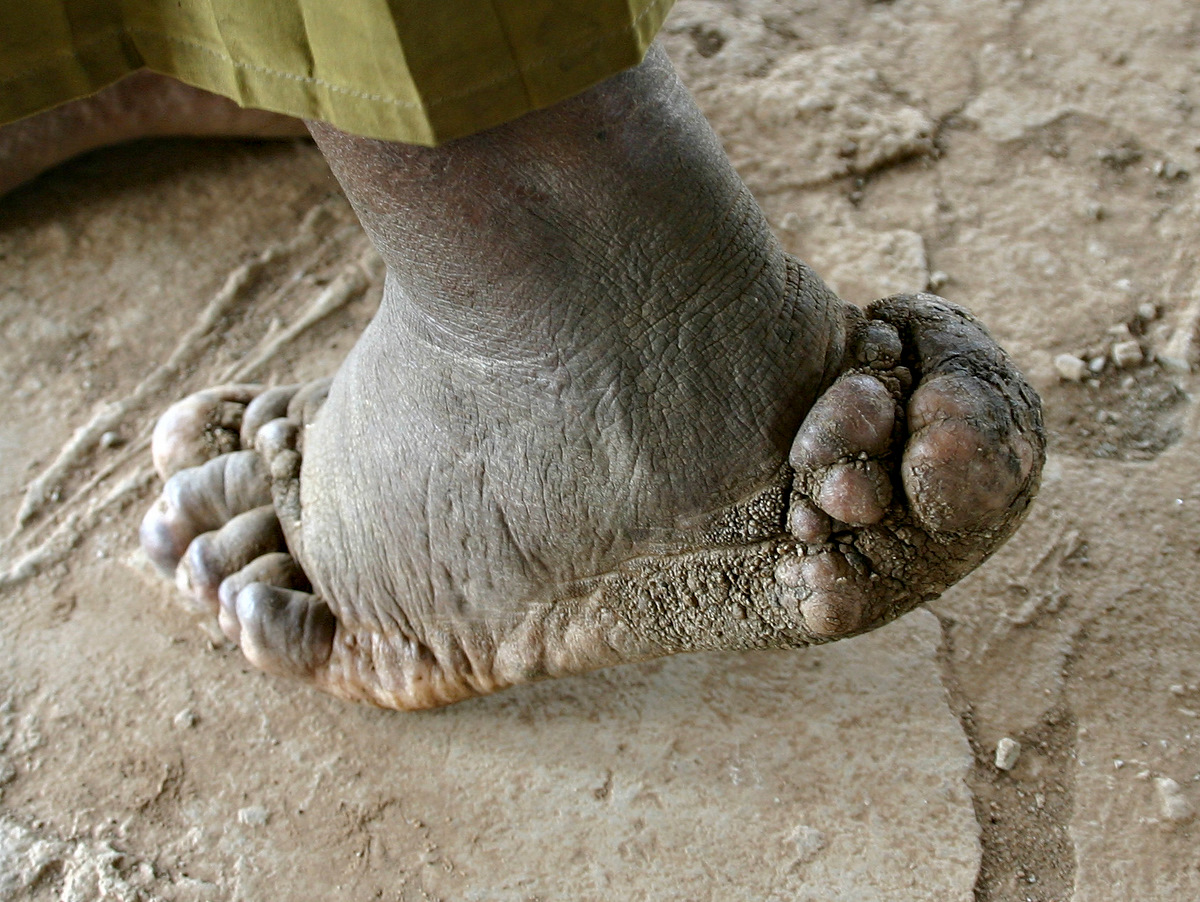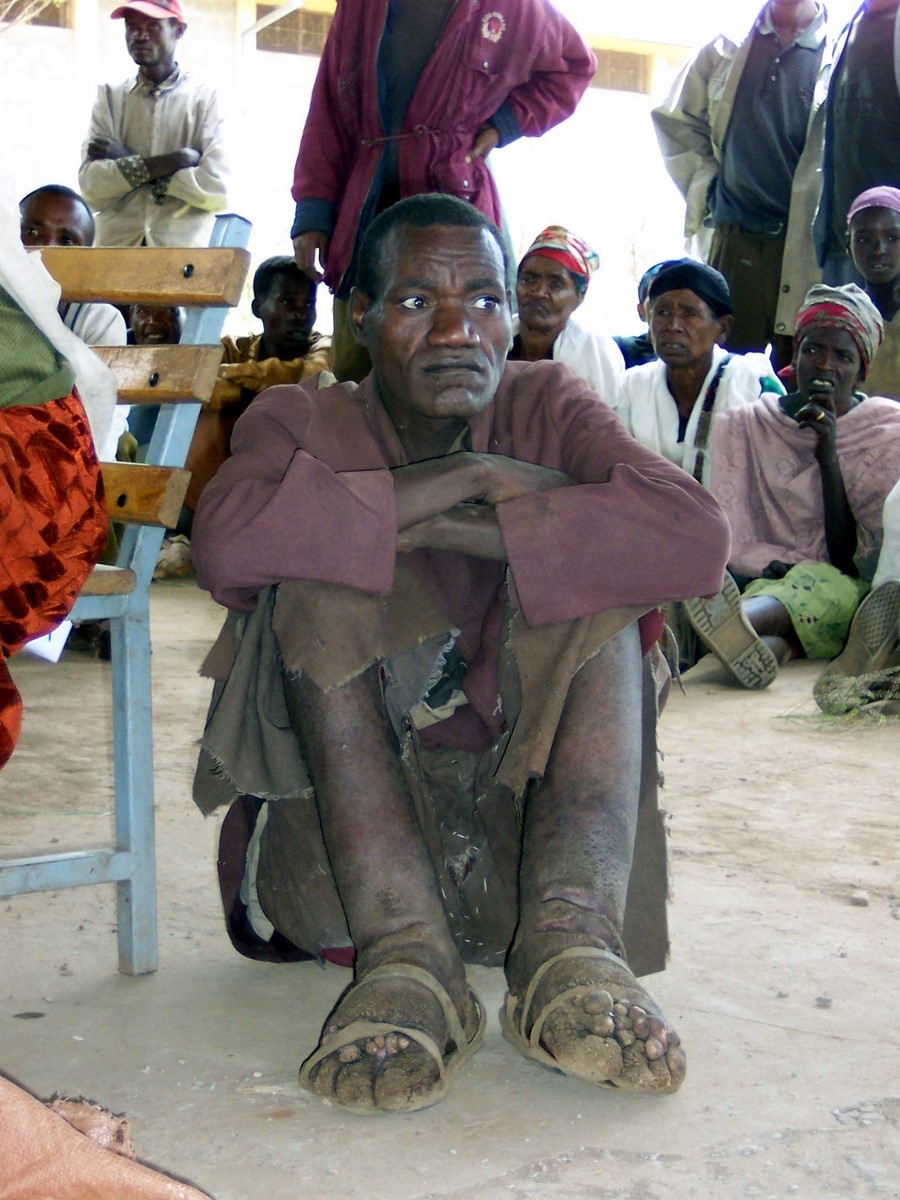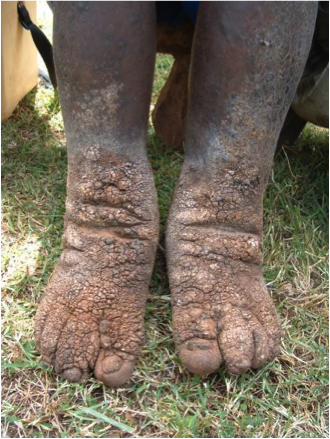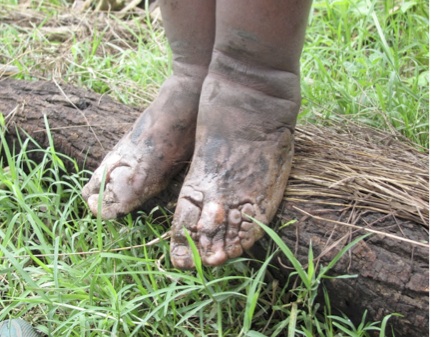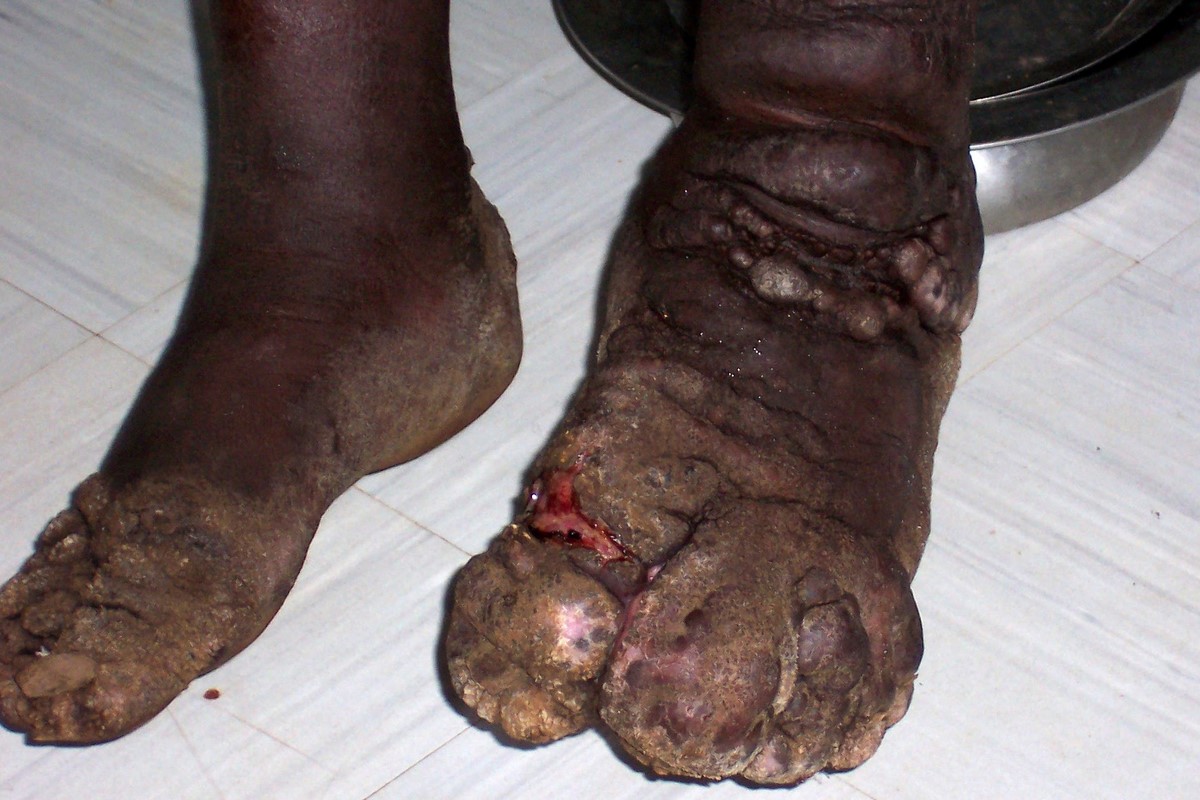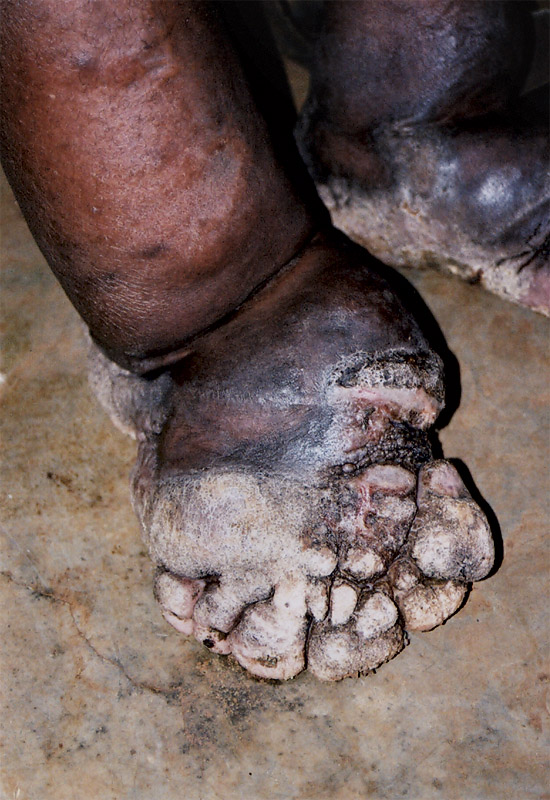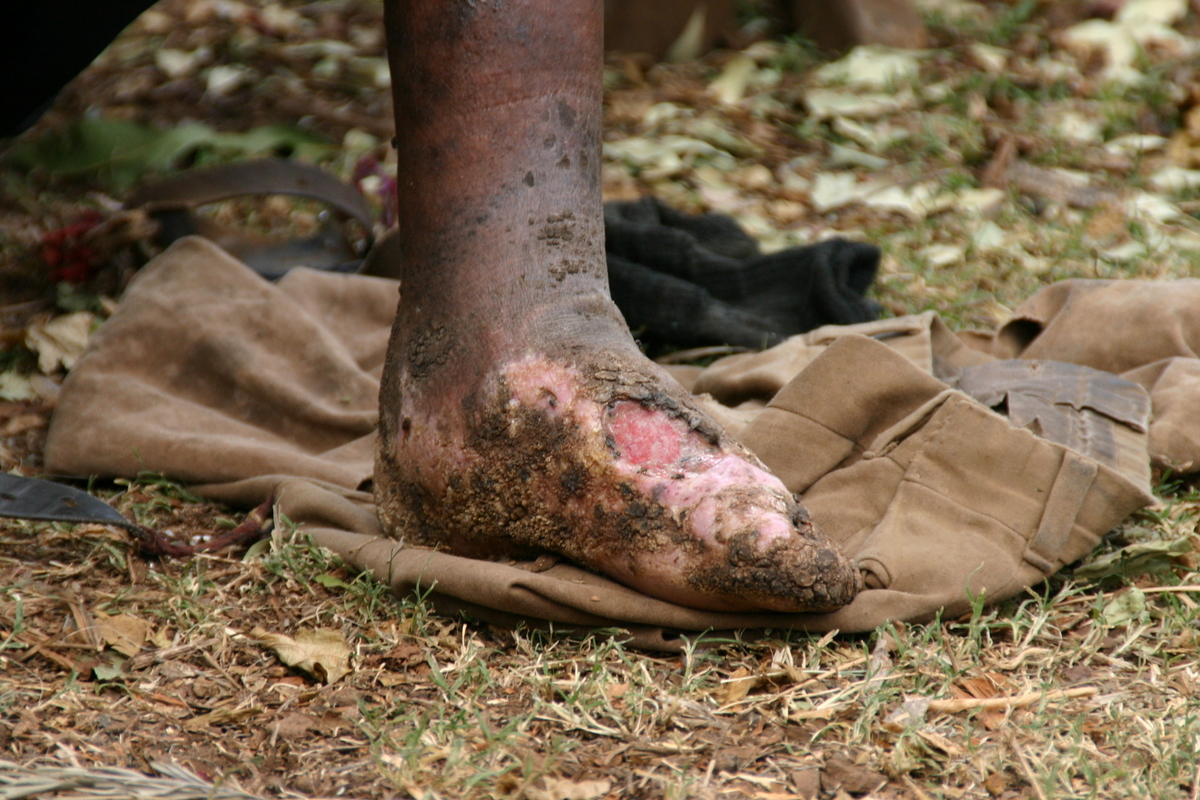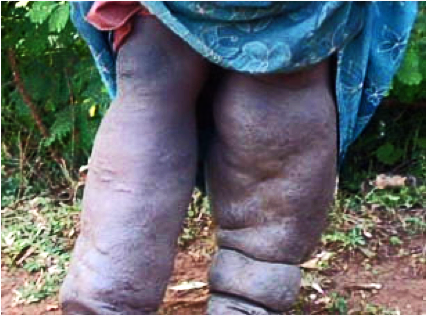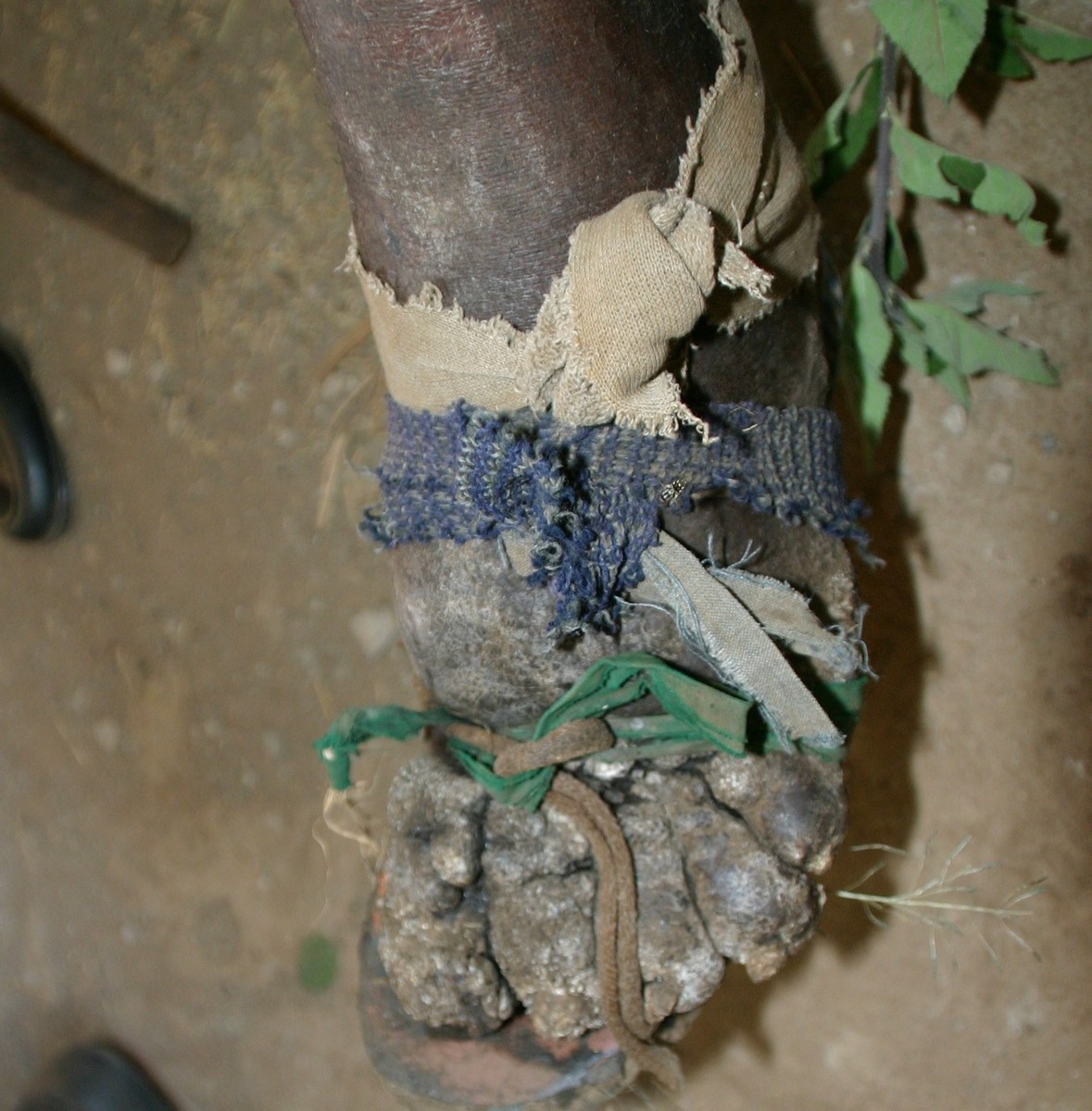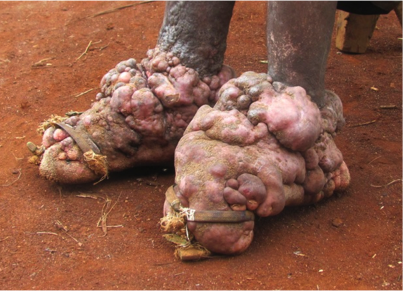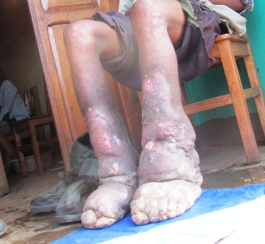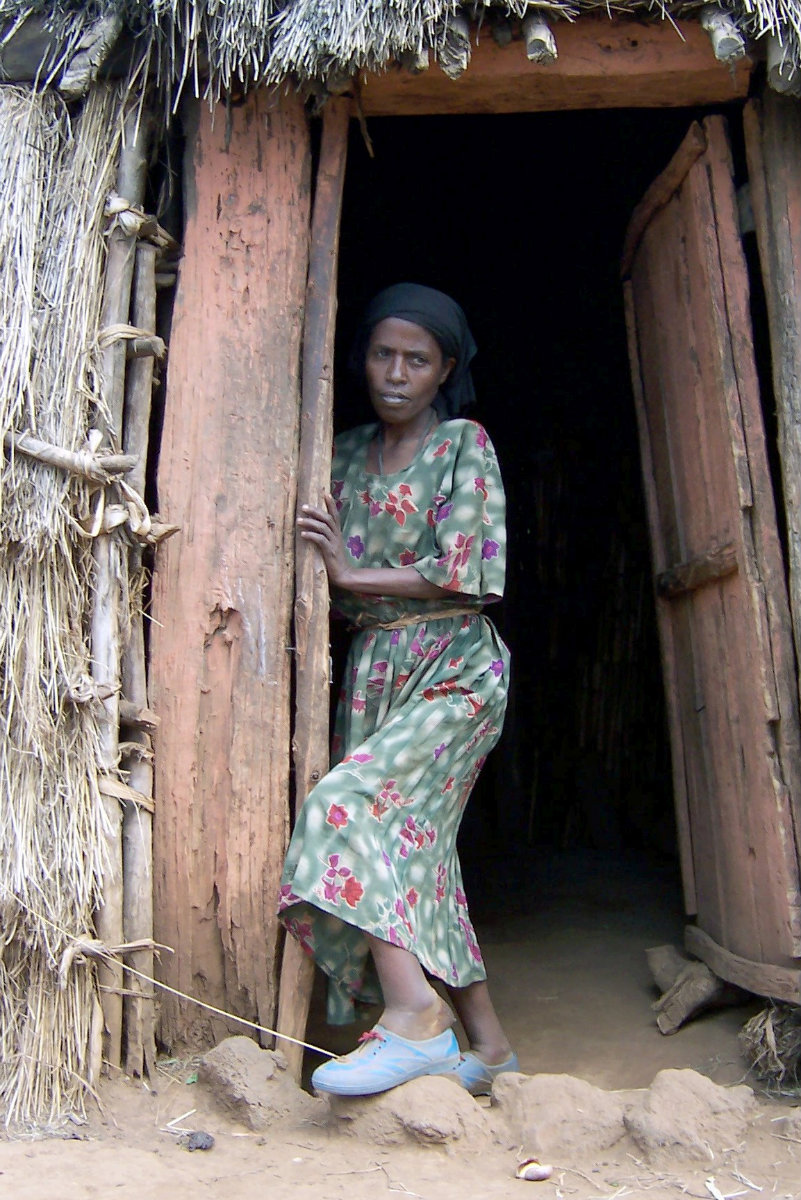Podoconiosis
Podoconiosis
Mossy foot is a disease that manifests itself as a massive swelling of the feet and legs. Its common name describes the appearance of the skin that becomes very rough and bumpy and changes to look like moss.
The scientific name for this condition is podoconiosis, from the Greek words for “foot” and “dust.” Podoconiosis is a non-infectious type of elephantiasis (swelling of the leg). In order to distinguish it from the other types of elephantiasis commonly found in the tropics, it is also called endemic, non-filarial elephantiasis. In contrast to podoconiosis, filarial disease is caused by a parasite that is transmitted by mosquitoes.
With recurrent infection, the condition can also result in feet with an offensive smell. The swelling is painful and often the discomfort makes it impossible for the sufferer to walk, let alone carry out normal work and family duties. Sufferers are ostracized. They are often forced to become beggars and some community members believe Pratica e fresca t-shirt that they have been cursed. Often, they are shunned like lepers.
Mossy Foot disease affects about 5% of the population in highland tropical areas with volcanic soils and lots of rainfall. This geographical combination produces a sticky red soil, rich in silicates that can penetrate the skin of susceptible people as they go about their daily business barefoot. Issues that determine personal susceptibility are not yet fully defined, but performance of agricultural activities barefoot in this environment certainly increases the risk.
Cause
Ernest Price, a British surgeon living in Ethiopia, discovered in the 1970’s that podoconiosis was caused by years of barefoot exposure to red clay soil.
Scientists are still investigating which particle or mineral within this soil causes the problems. It may be very tiny grains of silica that are responsible, or some other soil component.
However, not everyone living barefoot on the soil gets the disease, and there is strong evidence for a genetic component to disease causation. The unlucky minority of people with genetic susceptibility who go barefoot seem to develop an inflammatory reaction to soil particles, resulting in podoconiosis.
Consequences
Mossy foot disease can cause great social stigma. For this reason, it is often a “hidden disease” since families hide the afflicted from sight, not wanting to suffer the social embarrassment of being associated with the disease. In some cases, the afflicted one is even seen as cursed.
With patients barred from school, church, and community meetings, they are unable to obtain an education or to receive vocational training. As a result, they are unable to support themselves.
Without a social network, they have little chance for marriage and family. Married women are often cast off by husbands who cannot accept their condition. The plight of these women is particularly devastating, and often they have young children they cannot care for.
Facing rejection even by the government health care providers, they are trapped in a dilemma where there is no way of escape. Without help, they are truly destined to become the poorest of the poor.
Read the story of Aster Lemma to get a first hand view of one woman’s struggle to survive in isolation. You can also purchase Mossy Foot Stories to read compelling stories from a wide range of patients that have been treated GmarShops Marketplace , Jordan Essential Full-Zip Hoodie , De nouvelles pièces apparel Jordan x PSG font surface by the Mossy Foot Project.
Learn More
Here are some additional resources for researching mossy foot in Ethiopia:
- The World Health Organization (WHO) provides information on eliminating podoconiosis.
- Wikipedia also includes a brief description here.
- Footwork: The International Podoconiois Initiative website has recent research developments.
- Relevant statistics about Ethiopia are found in the CI World Fact Book.
- Scientific American article on podoconiosis.
- Article in Christianity Today on the Foot Washers of Ethiopia.
